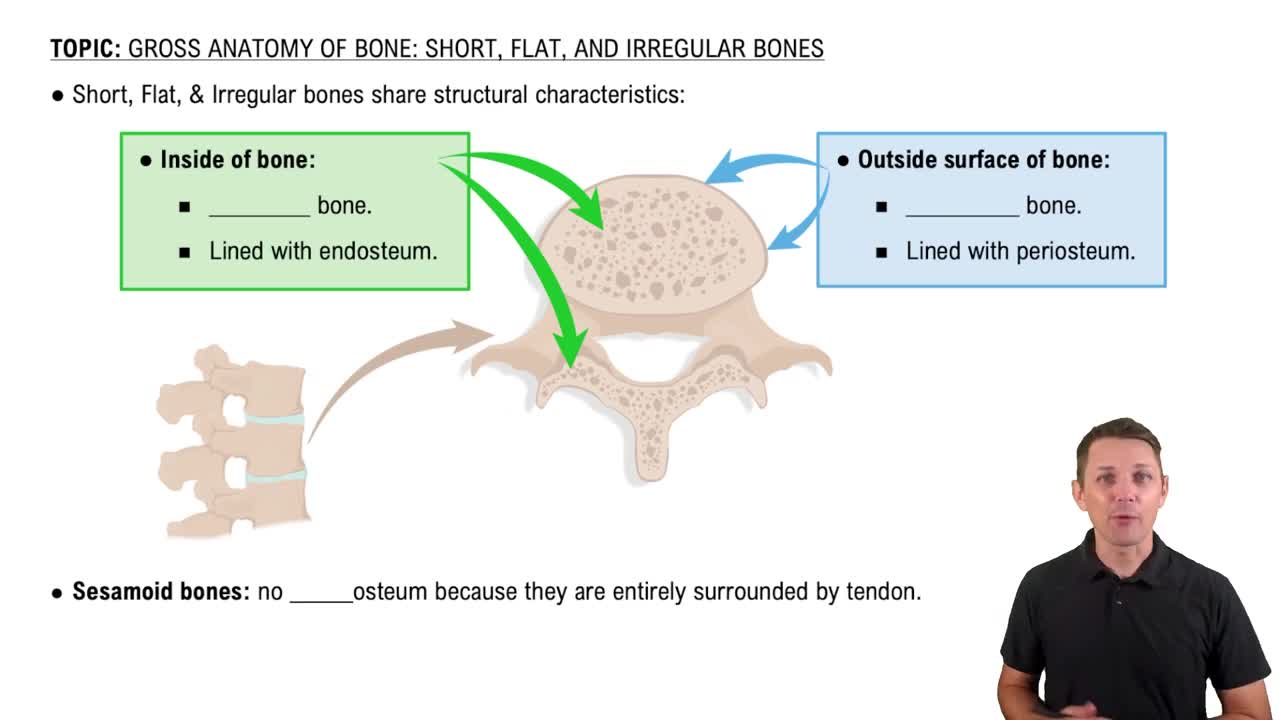Here are the essential concepts you must grasp in order to answer the question correctly.
Bone Classification
Bones are classified into four main categories: long, short, flat, and irregular. Long bones, such as the femur, are longer than they are wide and primarily function in movement. Short bones, like the carpals, are roughly equal in width, length, and height, providing stability and support. Flat bones, such as the skull, are thin and flat, while irregular bones have complex shapes that do not fit into the other categories.
Recommended video:
Structural Joint Classifications
Short Bones
Short bones are characterized by their nearly equal dimensions in width, length, and height, resembling cubes or boxes. They are primarily found in the wrists and ankles, where they provide stability and support while allowing for a range of motion. Their structure is designed to withstand compressive forces, making them essential for weight-bearing activities.
Recommended video:
Short, Flat, and Irregular Bones
Anatomical Terminology
Understanding anatomical terminology is crucial for accurately describing the characteristics and functions of bones. Terms like 'long,' 'short,' 'flat,' and 'irregular' provide a framework for categorizing bones based on their shapes and functions. This terminology helps in identifying the specific type of bone in question, which is essential for answering questions related to bone structure and classification.
Recommended video:
 Verified step by step guidance
Verified step by step guidance


